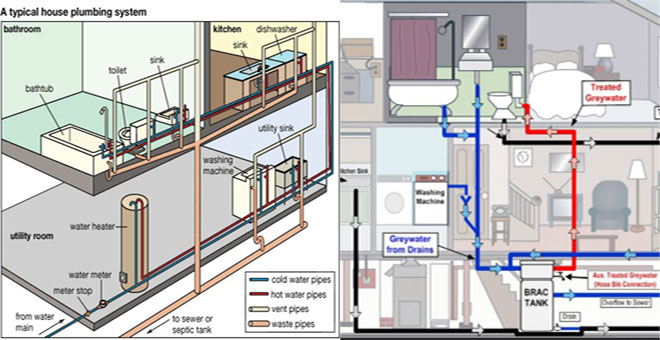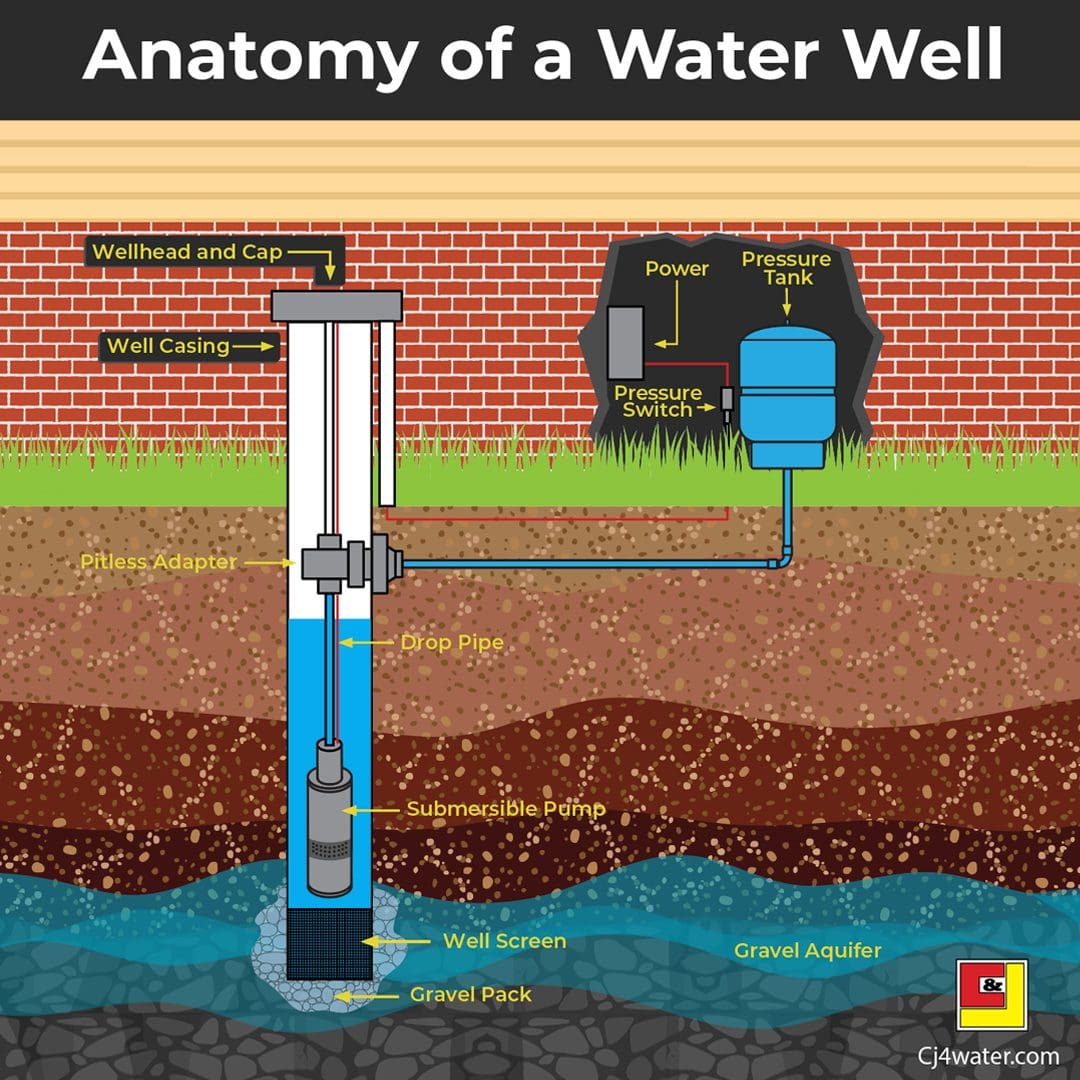They are making several great points about Understanding Your Home's Plumbing Anatomy as a whole in this article directly below.

Understanding exactly how your home's pipes system works is vital for every single property owner. From providing tidy water for drinking, food preparation, and showering to safely eliminating wastewater, a properly maintained plumbing system is important for your family members's health and comfort. In this comprehensive overview, we'll explore the intricate network that comprises your home's pipes and deal pointers on maintenance, upgrades, and dealing with typical problems.
Introduction
Your home's plumbing system is more than just a network of pipes; it's a complex system that ensures you have accessibility to tidy water and efficient wastewater elimination. Knowing its parts and just how they interact can aid you protect against pricey fixings and make certain whatever runs smoothly.
Basic Components of a Pipes System
Pipelines and Tubes
At the heart of your plumbing system are the pipes and tubing that lug water throughout your home. These can be constructed from numerous products such as copper, PVC, or PEX, each with its benefits in terms of sturdiness and cost-effectiveness.
Fixtures: Sinks, Toilets, Showers, and so on.
Components like sinks, commodes, showers, and tubs are where water is utilized in your house. Recognizing exactly how these fixtures link to the plumbing system helps in diagnosing troubles and intending upgrades.
Shutoffs and Shut-off Points
Valves regulate the circulation of water in your pipes system. Shut-off valves are essential during emergency situations or when you require to make repair work, allowing you to separate parts of the system without disrupting water flow to the whole home.
Supply Of Water System
Main Water Line
The major water line links your home to the community water or a personal well. It's where water enters your home and is dispersed to different fixtures.
Water Meter and Stress Regulatory Authority
The water meter steps your water use, while a stress regulator makes certain that water flows at a risk-free pressure throughout your home's pipes system, avoiding damage to pipelines and fixtures.
Cold Water vs. Warm water Lines
Comprehending the distinction in between cold water lines, which supply water directly from the primary, and hot water lines, which lug heated water from the hot water heater, helps in fixing and preparing for upgrades.
Drain System
Drain Water Lines and Traps
Drain pipelines bring wastewater far from sinks, showers, and bathrooms to the sewer or sewage-disposal tank. Catches protect against sewage system gases from entering your home and also trap particles that can cause blockages.
Air flow Pipelines
Air flow pipes permit air into the drain system, preventing suction that might slow drain and trigger traps to empty. Correct ventilation is crucial for maintaining the stability of your pipes system.
Significance of Appropriate Water Drainage
Guaranteeing appropriate water drainage prevents back-ups and water damages. Frequently cleaning up drains and maintaining traps can avoid costly repair services and prolong the life of your pipes system.
Water Furnace
Sorts Of Hot Water Heater
Hot water heater can be tankless or typical tank-style. Tankless heating systems heat water on demand, while tanks store heated water for instant usage.
Upgrading Your Plumbing System
Reasons for Upgrading
Upgrading to water-efficient fixtures or replacing old pipes can enhance water high quality, minimize water expenses, and boost the worth of your home.
Modern Pipes Technologies and Their Advantages
Check out modern technologies like clever leakage detectors, water-saving commodes, and energy-efficient hot water heater that can conserve cash and minimize ecological influence.
Price Factors To Consider and ROI
Determine the in advance expenses versus long-lasting cost savings when considering pipes upgrades. Several upgrades spend for themselves via minimized utility bills and fewer repairs.
How Water Heaters Attach to the Pipes System
Recognizing exactly how water heaters connect to both the cold water supply and hot water circulation lines assists in diagnosing issues like insufficient warm water or leakages.
Upkeep Tips for Water Heaters
Frequently flushing your water heater to get rid of debris, inspecting the temperature settings, and evaluating for leakages can prolong its life expectancy and improve power performance.
Common Pipes Problems
Leaks and Their Reasons
Leakages can happen due to maturing pipelines, loose fittings, or high water stress. Attending to leaks promptly stops water damages and mold and mildew growth.
Blockages and Blockages
Obstructions in drains pipes and toilets are often brought on by flushing non-flushable items or a build-up of oil and hair. Utilizing drain displays and being mindful of what goes down your drains pipes can avoid obstructions.
Indications of Plumbing Issues to Expect
Low tide pressure, slow-moving drains, foul odors, or abnormally high water expenses are signs of prospective plumbing troubles that ought to be resolved quickly.
Pipes Maintenance Tips
Routine Inspections and Checks
Set up annual plumbing examinations to catch concerns early. Search for indications of leaks, rust, or mineral buildup in taps and showerheads.
Do It Yourself Maintenance Tasks
Straightforward tasks like cleansing tap aerators, checking for commode leaks making use of dye tablet computers, or insulating subjected pipelines in chilly environments can prevent significant plumbing problems.
When to Call a Specialist Plumbing
Know when a pipes issue needs professional competence. Trying complex repair services without proper understanding can result in even more damage and greater repair expenses.
Tips for Reducing Water Usage
Basic habits like taking care of leakages promptly, taking much shorter showers, and running complete lots of laundry and meals can preserve water and lower your utility bills.
Eco-Friendly Plumbing Options
Take into consideration sustainable pipes materials like bamboo for floor covering, which is durable and eco-friendly, or recycled glass for counter tops.
Emergency Preparedness
Steps to Take Throughout a Pipes Emergency
Know where your shut-off valves are located and exactly how to switch off the water supply in case of a ruptured pipe or major leak.
Value of Having Emergency Situation Calls Handy
Keep get in touch with info for neighborhood plumbing professionals or emergency services readily available for quick action throughout a pipes situation.
Ecological Effect and Conservation
Water-Saving Fixtures and Devices
Mounting low-flow taps, showerheads, and commodes can significantly reduce water usage without sacrificing efficiency.
DIY Emergency Fixes (When Appropriate).
Momentary solutions like using duct tape to patch a dripping pipe or placing a bucket under a dripping faucet can minimize damage till a specialist plumbing professional gets here.
Final thought.
Comprehending the composition of your home's plumbing system empowers you to maintain it effectively, conserving money and time on fixings. By adhering to regular upkeep regimens and remaining notified regarding modern plumbing modern technologies, you can guarantee your pipes system operates efficiently for years ahead.
The Anatomy of Your Home s Plumbing System
Understanding the anatomy of your home s plumbing system is essential for any homeowner. It not only helps in identifying potential issues but also facilitates effective communication with professionals when repairs or upgrades are needed. Your home s plumbing system is more than just pipes and faucets; it s a complex network that ensures the efficient and hygienic flow of water in and out of your house. In this blog, we ll dissect the crucial components of your home s plumbing system. For those in Antelope Valley, Brock Plumbing is your trusted partner for all your plumbing needs, ensuring your system functions smoothly and efficiently.
Water Supply System
- Main Water Line: This is where your home s plumbing system begins. The main water line connects your home to the public water supply or a private well.
- Pipes and Shut-off Valves: Pipes distribute water throughout your home. Shut-off valves are crucial for controlling the flow of water and making repairs without shutting off the entire system.
Drainage System
- Drain Pipes: These pipes carry waste and water away from sinks, toilets, and showers.
- Vents: Vents allow sewer gases to escape and help maintain proper pressure in the drainage pipes, ensuring efficient flow of wastewater.
- Traps: Every fixture has a trap, a U-shaped pipe that holds water and prevents sewer gases from entering your home. The most common is the P-trap under sinks.
Fixtures and Appliances
Fixtures and appliances are the most interacted with parts of your plumbing system. They include sinks, toilets, showers, dishwashers, and washing machines. Each fixture and appliance has its own supply and drainage connection, ensuring they receive clean water and can dispose of wastewater effectively.
Water Heating System
Your water heater is a crucial component, providing hot water to various fixtures and appliances in your home. It can be tank-based or tankless, with each type having its own set of advantages and maintenance requirements. Regular maintenance is essential to ensure efficient operation and extend the lifespan of the unit.
Sump Pump
In areas prone to flooding or with high water tables, a sump pump is an essential part of the plumbing system. It s installed in the lowest part of your basement or crawlspace and pumps out water that accumulates, preventing flooding and protecting your home from water damage.
Septic System
Homes that are not connected to a municipal sewer system have a septic system and an underground wastewater treatment structure. Understanding how to maintain your septic system is crucial to prevent backups, odors, and early system failure.
Conclusion
Your home s plumbing system is a complex and essential network, ensuring the efficient and hygienic flow of water in and out of your property. Understanding its key components helps in maintaining it properly and identifying issues before they escalate into major problems. For residents in Antelope Valley, Brock Plumbing is dedicated to providing top-notch services, ensuring that every part of your plumbing system is in perfect working order. Trust our team of professionals to handle all your plumbing needs, ensuring your home remains comfortable, safe, and well-maintained.
https://brockplumbinganddrains.com/blog/the-anatomy-of-your-homes-plumbing-system/

Hopefully you liked our part on Plumbing Installation 101: All You Need to Know. Thanks for taking a few minutes to read our blog post. Liked our blog? Please share it. Help other people locate it. Bless you for being here. Come back soon.
See Availability
Comments on “An In-Depth Look at Your House's Plumbing System Anatomy”